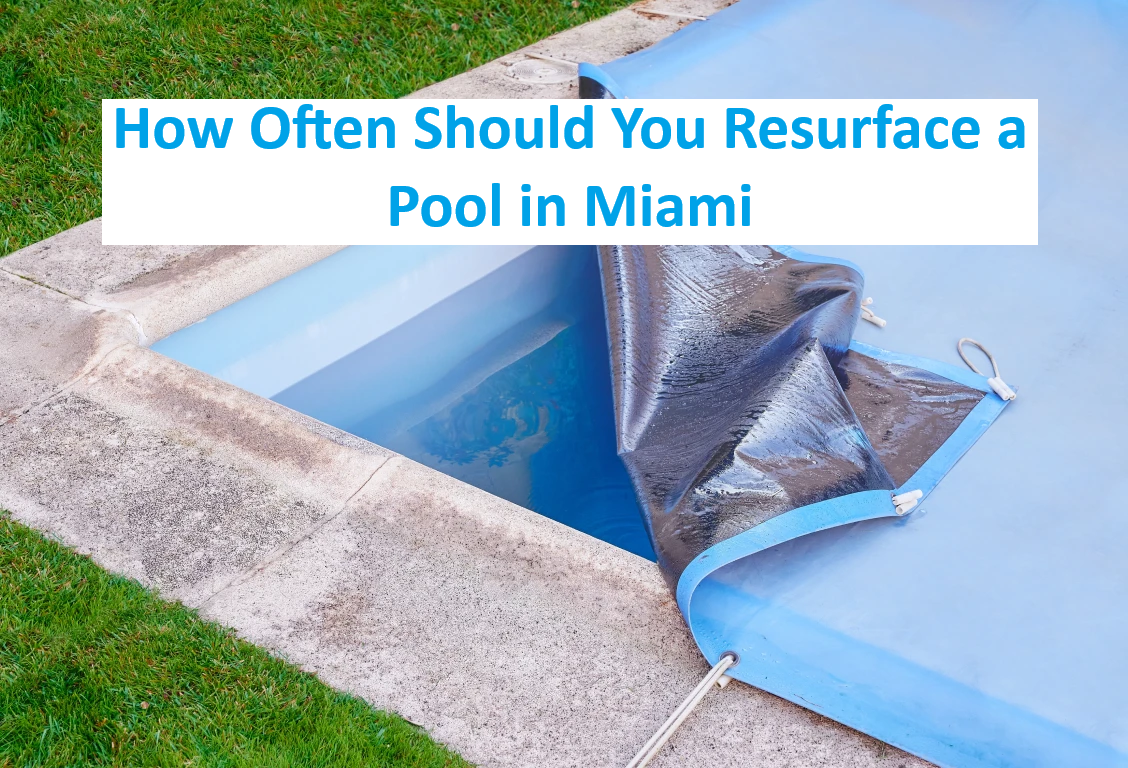Owning a pool in Miami means enjoying the luxury of year-round swimming, but with that comes the responsibility of regular maintenance. One of the most important aspects of pool care is resurfacing a process that restores the pool’s surface, improves appearance, and prevents damage. If your pool surface is cracked, stained, or rough to the touch, it might be time for a refresh.
In this guide, we’ll walk you through the step-by-step process of pool resurfacing, so you know exactly what to expect.
Inspection and Draining the Pool
The process starts with a professional inspection of your pool’s current condition. A technician will check for cracks, stains, roughness, and other surface damage. Once the evaluation is complete and resurfacing is approved, the first step is to drain the pool completely using a submersible pump.
Surface Preparation
Once the pool is empty, the existing surface must be prepared. This involves:
- Chipping out damaged or loose plaster
- Removing dirt, debris, algae, and mineral buildup
- Sanding or hydro-blasting to roughen the surface for bonding
Surface prep is one of the most important steps, as it ensures the new material adheres properly and lasts longer.
Repairing and Patching
Next, the crew will repair any structural cracks or problem areas in the pool shell. Common repairs include:
- Filling cracks with hydraulic cement or epoxy
- Patching hollow spots or delaminated areas
- Leveling out uneven surfaces
This step helps restore the integrity of the pool and ensures a smooth finish.
Applying the New Surface Material
Now the actual resurfacing begins. You’ll have chosen a finish such as plaster, quartz, pebble, or tile. The team will:
- Mix the new material on-site
- Spray or trowel it onto the prepared pool shell
- Smooth and shape it evenly
Different materials require different techniques, but the goal is the same — to create a beautiful, water-tight surface.
Curing and Refilling
After the surface has been applied, it needs time to cure properly. Curing times vary depending on the material, but generally:
- You must wait 24 to 72 hours before refilling the pool
- The crew may spray the surface periodically with water to aid curing
Once the surface is ready, the pool is carefully refilled with clean water.
Balancing Chemicals
Fresh surfaces are sensitive to chemicals, so it’s crucial to properly balance the water. The initial water treatment involves adjusting pH, alkalinity, and calcium levels to protect the new finish and prevent staining or scaling.
Professionals typically monitor chemical levels for the first few days or weeks after resurfacing to ensure everything is stable.
Final Thoughts
The resurfacing process may take anywhere from 5 to 10 days, depending on the size of your pool, the chosen material, and weather conditions. While it requires careful planning, the results are well worth it — a smoother, safer, and more beautiful swimming pool that lasts for years to come.
If you’re considering giving your pool a fresh start, Pool Resurfacing Miami offers professional, high-quality resurfacing services tailored to Miami’s unique climate and homeowner needs.



